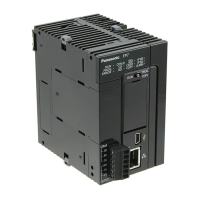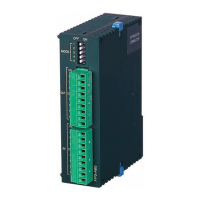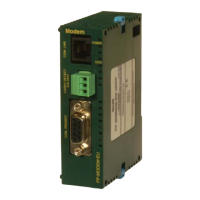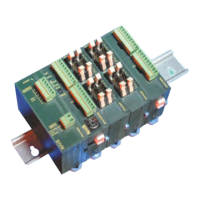(a)
Area in which the string to
be taken out is stored
(b)
Destination area (before
transferring)
(c)
Destination area (after
transferring)
(1) Storage area size (2) Character count -
■
Precautions for programming
● If the number of characters [n] is larger than the number of characters in the string [S1] as
from the position specified by [p], then the replacement is performed for the number of
characters of the string [S] as from the position specified by [p].
● The [p] position should be specified by a number counted from low order in sequence,
putting the least significant byte as K0 (Byte 0): 0, 1, 2 and so on.
● When specifying with a character constant, the maximum is 256 characters.
● When specifying an empty string for [S1], the result is always 0.
■
Flag operations
Name Description
SR7
SR8
(ER)
To be set in the case of out-of-range in indirect access (index modification).
To be set when [S] (number of characters) is out of the range.
To be set when the number of characters of [D] is smaller than [n].
To be set when the position of [p] is larger than the number of characters of [D].
To be set when the number of characters is larger than the storage area size for [S] and [D].
To be set when a data table with a storage area size of 0 or 65535 is specified.
To be set when [n] (number of characters to be replaced) is out of the range.
SR9 (CY)
To be set when the number of characters taken out is larger than the storage area size of
[D].
14.37 ESREP (Replacement of a String: With Storage Area Size)
14-144 WUME-FP7CPUPGR-12

